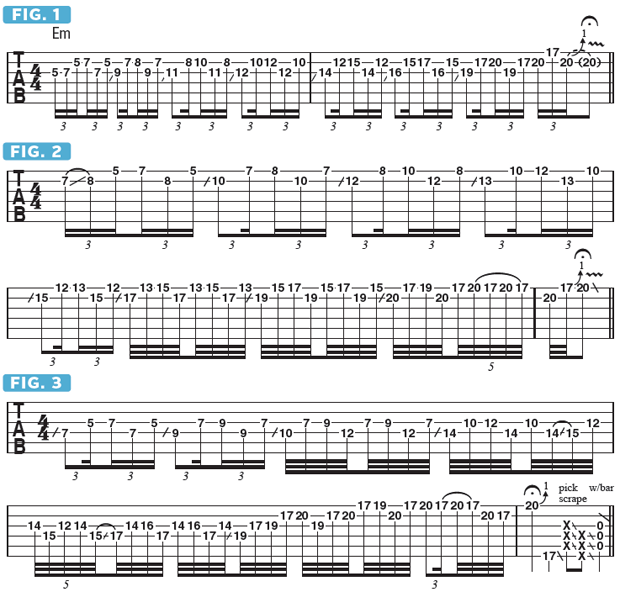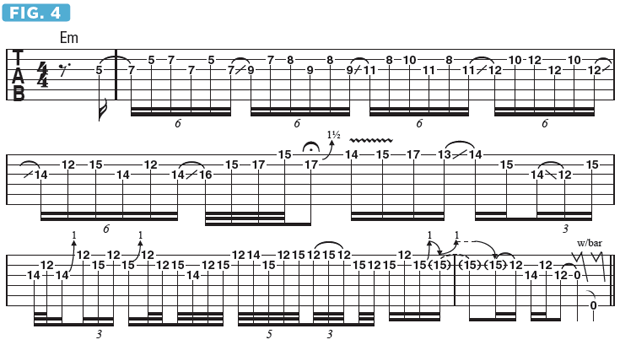Building Complex Rock Riffs from Melodic Patterns that Slide Up the Fretboard

A lot of people come up to me and say, “Satchel, you rock! You know all 28 frets of your guitar, man!”
And I say, dude, are you stupid? My guitar only has 24 frets…or something. I don’t remember how many frets my guitar has. But the point is that I know how to get up and down my neck, and how do I know that? I know all the scales and all the arpeggios, and all of the positions of all of the modes, in all of the keys.
But once you know all of that stuff, you still need tools to create cool, memorable licks. This month, I’m going to show you one tool I like to use, which is a short, simple repetitive pattern you can easily move up the neck to create really cool licks for your solos.
FIGURE 1 is based on the E natural minor scale (E F# G A B C D), and I begin with two ascending notes on the G string, followed by two ascending notes on the B string and then consecutive single notes on the G and B strings. On beat two, I shift up the neck to the next position, and instead of starting the new shape by playing two notes on the G string,
I just slide into the higher of the two notes and follow on the B string with a repeat of the previous shape. Keep in mind that all of the notes I play are diatonic to (within the scale structure of) E natural minor, so the shapes in each fretboard position change slightly to accommodate the scale. On a given string, the notes used are either one fret, which is a half step, or two frets, which is a whole step, apart.
From beat four of bar 1 through all of bar 2, I switch to shapes that are based on E minor pentatonic (E G A B D), ending with a whole-step bend and vibrato on the B string. This idea can easily be moved over to other pairs of adjacent strings. In FIGURE 2, I move the concept up to the B and high E strings and play ascending licks based primarily on A natural minor (A B C D E F G), switching to fast hammers and pulls based on A minor pentatonic (A C D E G) at the end of the lick.
FIGURE 3 repositions the A natural minor concept onto the D and G strings, but once I reach 17th position, I stay there and move across to the higher strings to finish off the lick, culminating with pick scrapes, whammy-bar dives and all of that other crap that metal guitar players are required to do.
Finally, FIGURE 4 shows how I work these types of shapes into a typical solo. The lick is played in E minor, and, rest assured, anytime you see some long-haired guy playing rock or metal, the song is probably in E minor or A minor…or D minor, or B minor, or F# minor, or G minor, or Cs minor.
Okay, this is getting confusing, right? So always go for E minor first. It’s easy and it sounds really good.


Get The Pick Newsletter
All the latest guitar news, interviews, lessons, reviews, deals and more, direct to your inbox!









